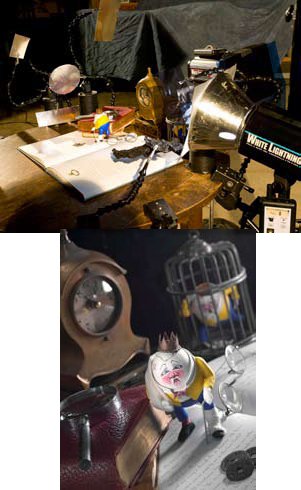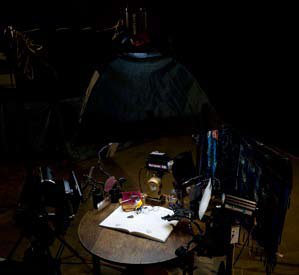articles/Business/table-page3
Tabletop Photography - part 3 of 1 2 3 4
by Dave Montizambert Published 01/11/2006

On the topic of doing things inexpensively, a strobe head is optimum but is not totally necessary. A small tabletop set can be lit with a 60 watt tungsten bulb and a long exposure in a relatively dark room. Or better still use a 500 -1000 watt work light. With digital you can custom white balance for the really warm colour shift caused by tungsten sources. Most professional and semi-professional digital cameras have pretty long shutter-speeds that produce little to no noise. In terms of digital noise, when working with weak lights it is best to use a lower ISO setting and a longer shutter-speed than it is to use a higher ISO and a short shutter-speed. The question is, is there a quality difference between using a daylight balanced strobe and some sort of tungsten light? Yes there is, strobe gives us full spectrum light, tungsten light does not since it lacks the cool end of the spectrum. However the results from tungsten are good enough. A really "cool" inexpensive full spectrum solution is the Solux (www.solux.net) 4700K and 5000K low voltage (12 volt) 2-pin socket MR-16 bulbs - not a ton of juice, but really clean light. So if you are just getting started in photography and are tight on budget, go the tungsten or Solux route, then once you are making a little money, buy a strobe. Strobe allows you to photograph things that move, does away with ambient light problems and shaky floor issues, plus you can fade the power of the unit up or down with little impact on colour balance.
If you only own one light you can lighten the shadows on your tabletop set with a white reflector. Try placing this reflector above or to one side of the set and then angle it so that it catches the stray light passing over the subjects from the light origin and bounces it back into the shadows. For the fill reflector anything white will do - a white sheet of foam-board, or a white scrim, or a white towel, or white whatever.

For greater control and since I own one, my usual fill source is a soft-box. Using a second light (the soft-box) for fill gives me a little more control than a reflector fill since I can turn the power up or down to affect shadow contrast rather than having to rely on changing distance of the reflector to affect change.
The great thing about small tabletop sets is that they require very little space - with a little imagination and with permission from your spouse or room-mate you can easily turn a kitchen table into a profit centre between meals!
Humpty Set-up Camera: Sinar P3 with Sinar 54H digital back. Exposure: f13 (f11 & 1/3rd) at 1/60th, one exposure.
Please Note:
There is more than one page for this Article.
You are currently on page 3
- Tabletop Photography page 1
- Tabletop Photography page 2
- Tabletop Photography page 3
- Tabletop Photography page 4
1st Published 01/11/2006
last update 09/12/2022 14:59:29
More Business Articles
There are 0 days to get ready for The Society of Photographers Convention and Trade Show at The Novotel London West, Hammersmith ...
which starts on Wednesday 15th January 2025





